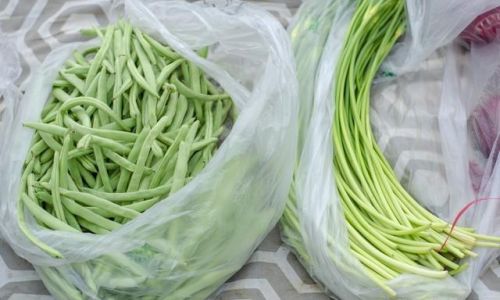Introduction
Blueberries, known for their vibrant color, sweet-tart flavor, and numerous health benefits, are a cherished fruit enjoyed by many. Whether incorporated into smoothies, baked goods, salads, or eaten straight from the container, blueberries offer a delightful and nutritious addition to any diet. However, like many fresh fruits, blueberries are susceptible to spoilage, particularly when not stored properly. Understanding how to preserve blueberries for extended freshness without allowing them to rot or degrade is crucial for maximizing their shelf life and enjoying their deliciousness for longer. This comprehensive guide will explore various methods for preserving blueberries, from simple storage techniques to more advanced preservation methods, ensuring you can savor these delightful berries for weeks, months, or even years.
Understanding Blueberry Spoilage

Before diving into preservation techniques, it’s essential to understand what causes blueberries to spoil. Spoilage in blueberries can be attributed to several factors, including moisture loss, mold growth, and enzymatic browning. Moisture loss leads to shriveling and a loss of texture, while mold growth can quickly render the berries inedible. Enzymatic browning occurs when oxygen reacts with compounds in the fruit, causing discoloration.
Proper Harvesting Techniques
The preservation process begins at harvest. Picking blueberries at the right time and with the right techniques can significantly impact their shelf life. Here are some key points to consider:
-
Timing: Harvest blueberries when they are fully ripe. Ripe blueberries are a deep, consistent blue color with a slight give when gently pressed. Avoid picking underripe berries, as they may not ripen further once picked.
-
Method: Use a gentle touch when harvesting. Twist or snap the berries off the stem rather than pulling, which can damage the plant. Handle the berries carefully to avoid bruising.
-
Weather: Harvest on dry days to minimize moisture content on the berries. Wet berries are more prone to mold and rot.
-
Storage Container: Use a shallow, ventilated container to hold harvested berries. Avoid stacking them too high, which can cause crushing.
Immediate Storage Techniques
Once harvested, prompt and proper storage is essential to extend the freshness of blueberries. Here are some immediate storage techniques:

-
Refrigeration: The refrigerator is the most common and effective way to store fresh blueberries. Place them in an airtight container or a plastic bag with the excess air removed. The ideal refrigerator temperature for blueberries is between 32°F and 40°F (0°C to 4°C). Properly stored, blueberries can last up to two weeks in the refrigerator.
-
Paper Towel Method: To further extend freshness, line the storage container with a paper towel before adding the berries. The paper towel will absorb excess moisture, reducing the risk of mold growth. Replace the paper towel every few days if it becomes damp.
-
Freezing: For longer-term storage, freezing is an excellent option. Rinse the berries gently under cold water, then pat them dry with a paper towel. Spread them out in a single layer on a baking sheet and place the sheet in the freezer until the berries are frozen solid. Once frozen, transfer them to an airtight container or freezer bag. Frozen blueberries can be stored for up to a year, though their texture may change slightly upon thawing.
Advanced Preservation Methods
For those looking to preserve blueberries for even longer periods or who wish to enjoy them in different forms, several advanced preservation methods are available.
-
Canning: Canning blueberries involves processing them in a hot water bath to destroy microorganisms that cause spoilage. Start by washing and sorting the berries, removing any stems or soft spots. Pack them into clean, hot jars, leaving headspace as specified in canning guides. Cover with boiling water or a light syrup, leaving the appropriate headspace. Process the jars in a boiling water canner for a specified amount of time based on jar size and altitude. Once cooled, check for seals and store in a cool, dark place. Properly canned blueberries can last for up to a year.
-
Drying: Drying blueberries浓缩了它们的天然甜味,同时保留了大部分的营养价值,Preheat your oven to a very low temperature, typically around 150°F (65°C), or use a food dehydrator. Wash and pat dry the berries, then spread them out in a single layer on baking sheets. Dry them until they are pliable but not brittle, which can take several hours to a day depending on the drying method and equipment. Store dried blueberries in an airtight container in a cool, dark place. They can last for several months to a year.
-
Jam or Jelly Making: Making blueberry jam or jelly is a delicious way to preserve the fruit while transforming it into a versatile pantry staple. Start by washing and crushing the berries. Combine them with sugar and lemon juice in a large pot and cook until thickened, stirring frequently. For jelly, strain out the pulp and seeds before cooking to a thicker consistency. Pour the jam or jelly into sterile jars, leaving headspace, and process in a boiling water canner for the appropriate amount of time. Once cooled, store in a cool, dark place for up to a year.
-
Freeze-Drying: Freeze-drying is a high-tech preservation method that removes almost all moisture from the fruit, resulting in a lightweight, shelf-stable product that retains its original flavor and texture when rehydrated. While home freeze-dryers are becoming more accessible, they are still a significant investment. Commercial freeze-drying services are also available for those interested in this preservation method. Freeze-dried blueberries can last for several years when stored in an airtight container in a cool, dark place.

Monitoring and Maintenance
Regardless of the preservation method chosen, regular monitoring and maintenance are crucial for ensuring the long-term freshness of blueberries. Here are some tips:
-
Inspect Regularly: Check stored blueberries periodically for signs of spoilage, such as mold, discoloration, or off odors. Remove any affected berries immediately to prevent the spread of spoilage.
-
Proper Labeling: When storing blueberries in containers or jars, label them with the date of preservation and the method used. This will help you keep track of when they were stored and how long they should last.
-
Storage Conditions: Ensure that stored blueberries are kept in the appropriate conditions. For refrigerated and frozen berries, maintain a consistent temperature. For canned, dried, and jam/jelly products, store in a cool, dark place to prevent degradation from light and heat.
Conclusion
Preserving blueberries for extended freshness without spoilage is a rewarding endeavor that allows you to enjoy the delicious and nutritious benefits of this fruit year-round. By understanding the causes of spoilage, harvesting at the right time, and utilizing proper storage and preservation techniques, you can maximize the shelf life of your blueberries. Whether you choose to refrigerate, freeze, can, dry, or make jam or jelly, there are numerous methods to suit your needs and preferences. With careful monitoring and maintenance, you can ensure that your blueberries remain fresh, delicious, and ready to enjoy for weeks, months, or even years. Happy preserving!




0 comments